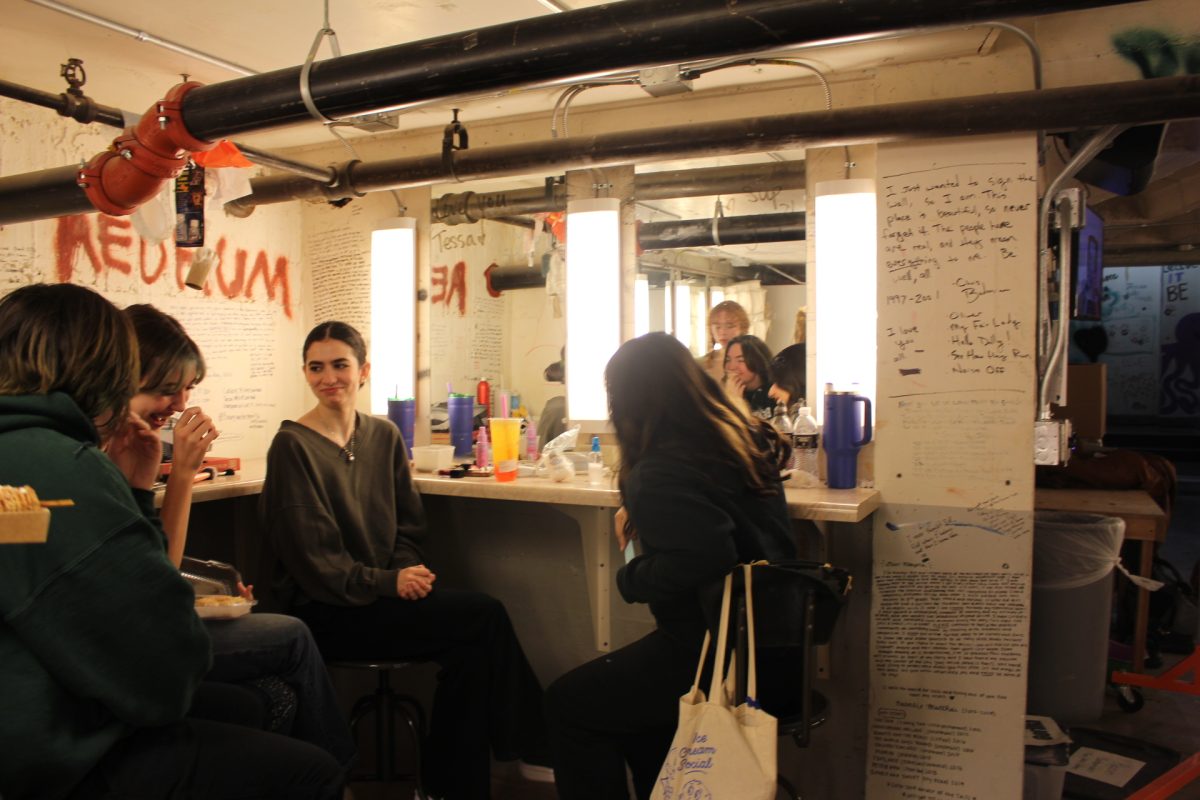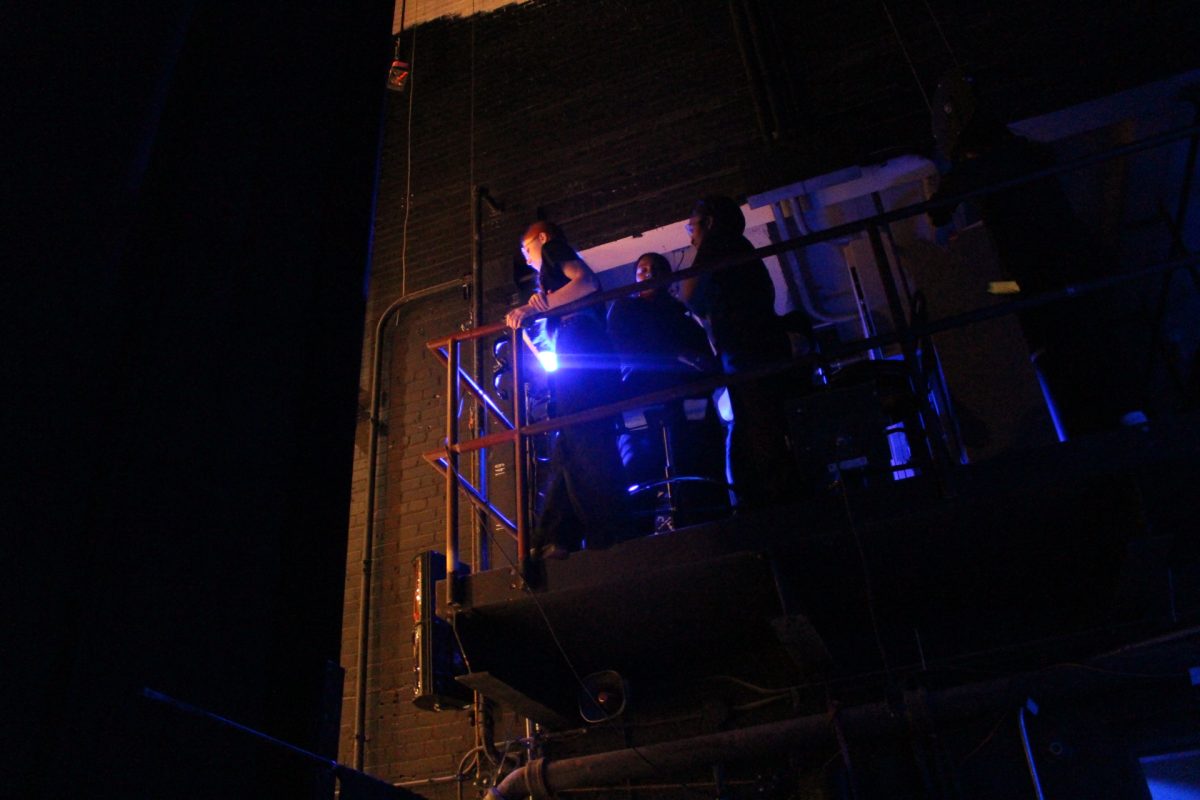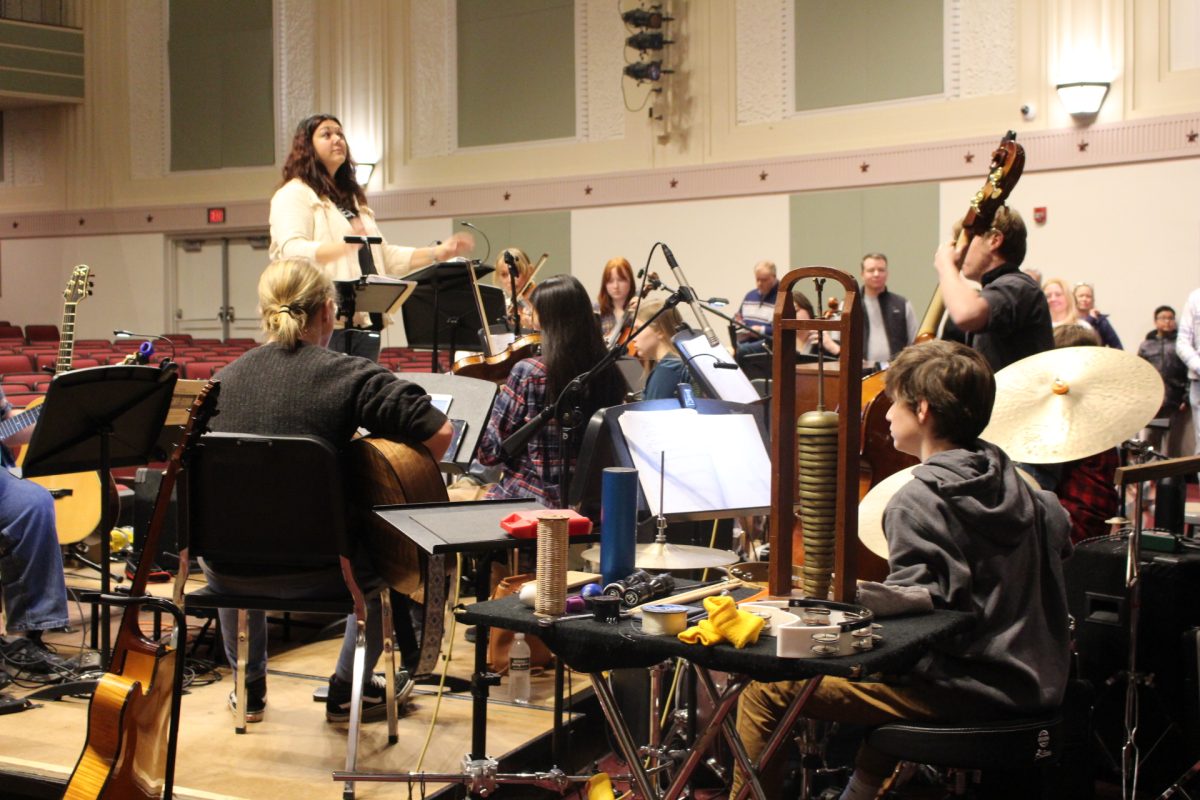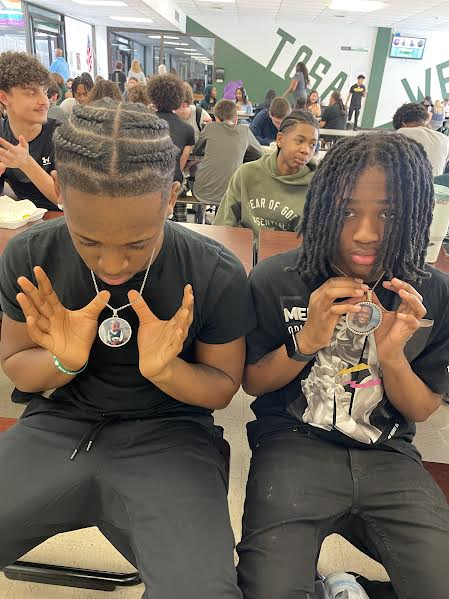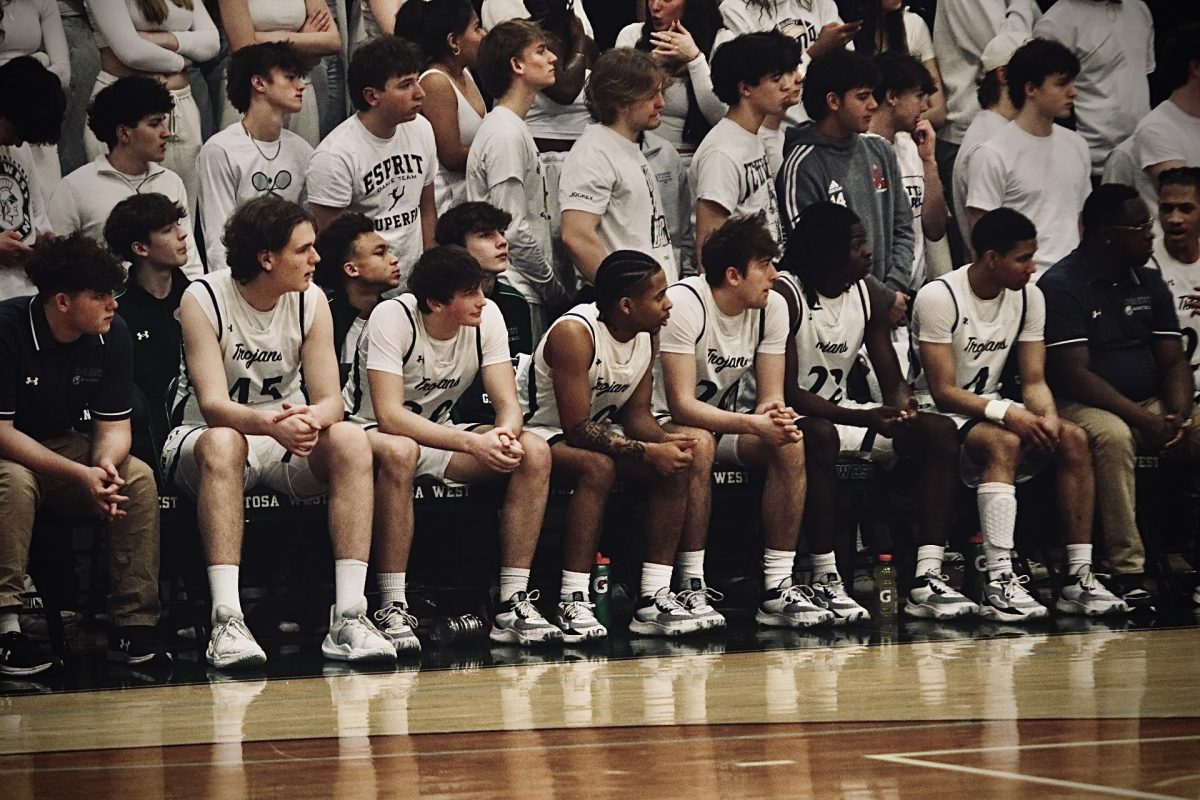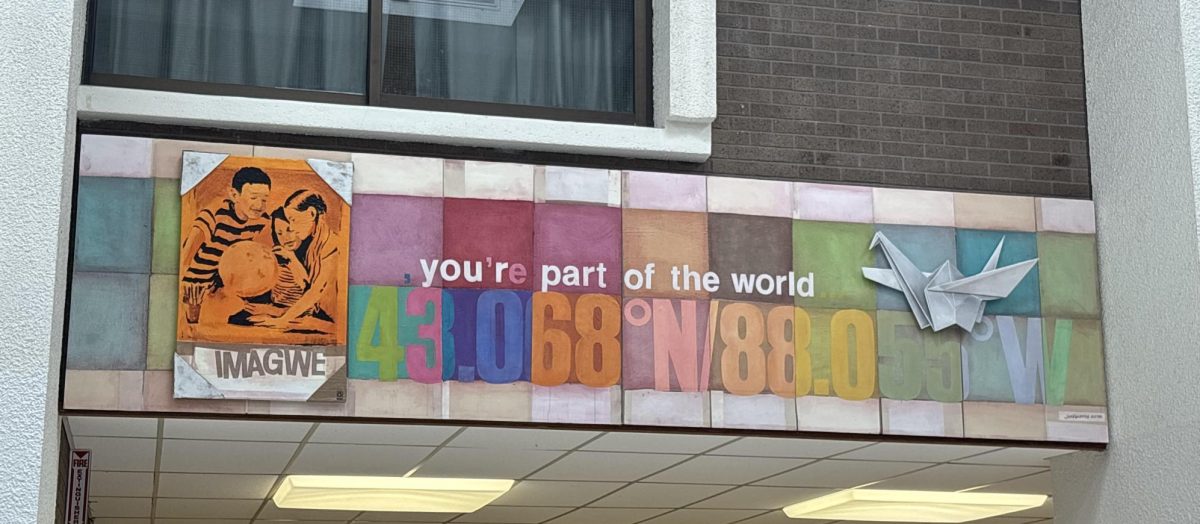Bright Star: Behind the Scenes
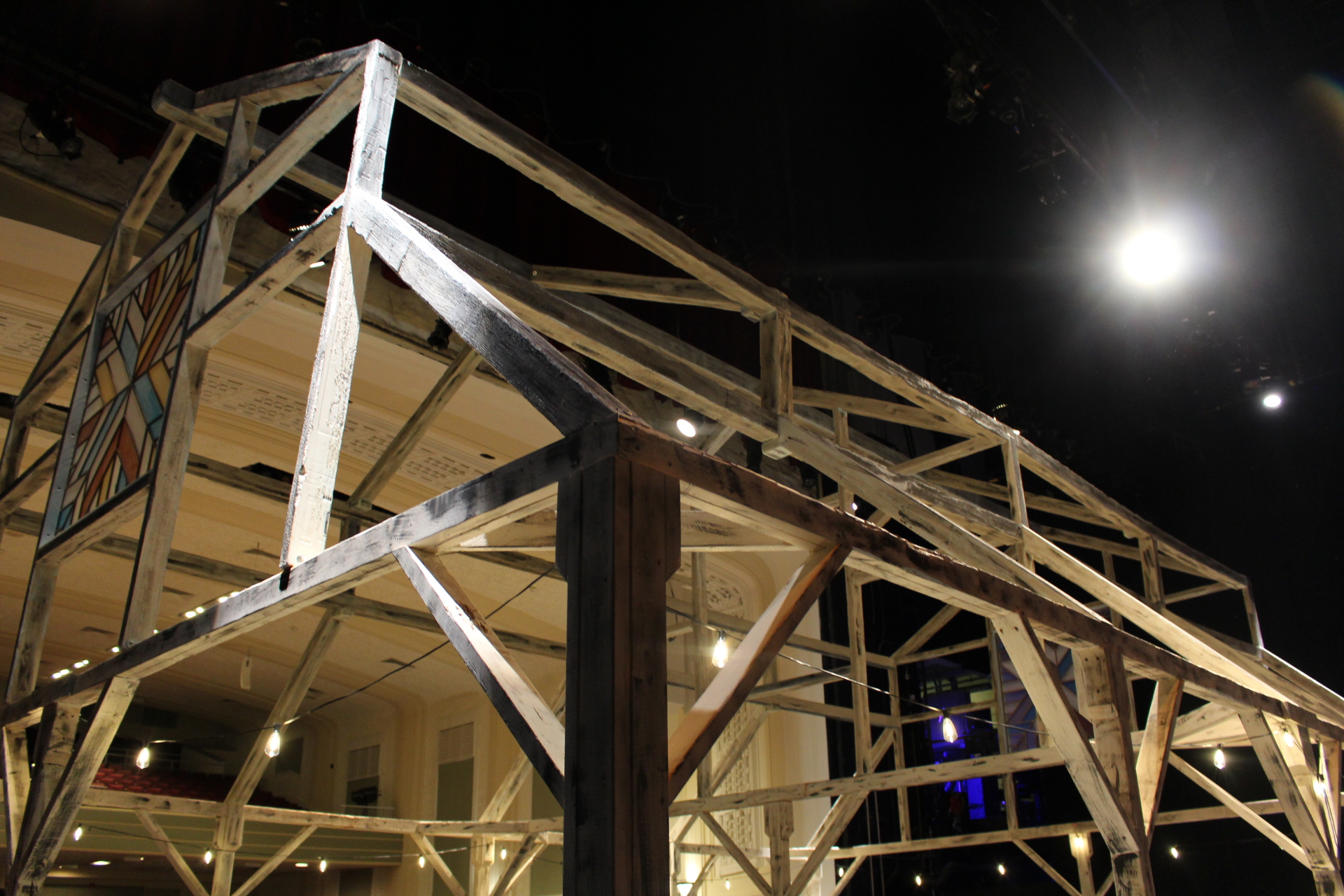
said Colleen Jaskulski, theater director at Wauwatosa East. What are the components that make a complete show? Of course, the pit, cast, and crew, in simple terms. In this year’s first musical, Bright Star—a heartfelt bluegrass adventure and shameless southern fun—the Tosa East Players demonstrate all of the intricacies of production, behind the scenes and on the stage. All that goes on is certainly interesting, and it may be surprising to know some details that aren’t as obvious during the main performance.

Colleen Jaskulski is the theater director at Tosa East. With the two shows East usually does, there is often one in the fall and one in the spring. This season however, there is one in the winter and one in the spring, making everything a little faster and more stressful. Along with the crushed timeline, Jaskulski has also taken on the major challenges that come alongside a show in the round. A production in the round is where the audience are seated on stage right alongside the actors. This is not Jaskulski’s first show in the round; however for most of the actors seen onstage, it is.
“As a director, you have to think a lot harder about using the space effectively and creatively all while making sure everyone can see,” said Jaskulski, when asked about difficulties of the round. “The audience is so close so every detail must be so particular. If there is something I could’ve done differently, it would have been the seating … It’s very complicated and I would’ve loved to brainstorm it more.”
With directing comes the best qualities of the production, such as the successful final product, as well as the worst qualities, which may be any major inconveniences. Jaskulski was asked about her favorite parts and most challenging moments of the show.
“My favorite part had to be watching the cast dive into the characters and grow into them along with seeing everyone’s skepticism fade away,” she said. “The ‘this is gonna be cool’ moment on everyone’s face as the barn slowly began to come up, costumes got fitted, and choreography was finalized.”
As for the difficulties, she adds, “The most challenging aspect of this show, crew-wise, was having the theater be a constant working space. This space is used by so many parts of East, not just the theater department … Having to have all of our stuff always on stage alongside trying to work with all these other departments [was] found to be a greater issue than we had previously thought. All of that plus having to remove the risers the night of opening created great setbacks for nearly every crew.”
At last, Jaskulski has some final words to share about Bright Star and what the audience should know: “One of my main goals with this show was to make Alice’s (the main character) journey very clear. We did this by using lights, costumes, choreography, etc. A lot is going on in this show but she is truly the centerpiece of the story.”
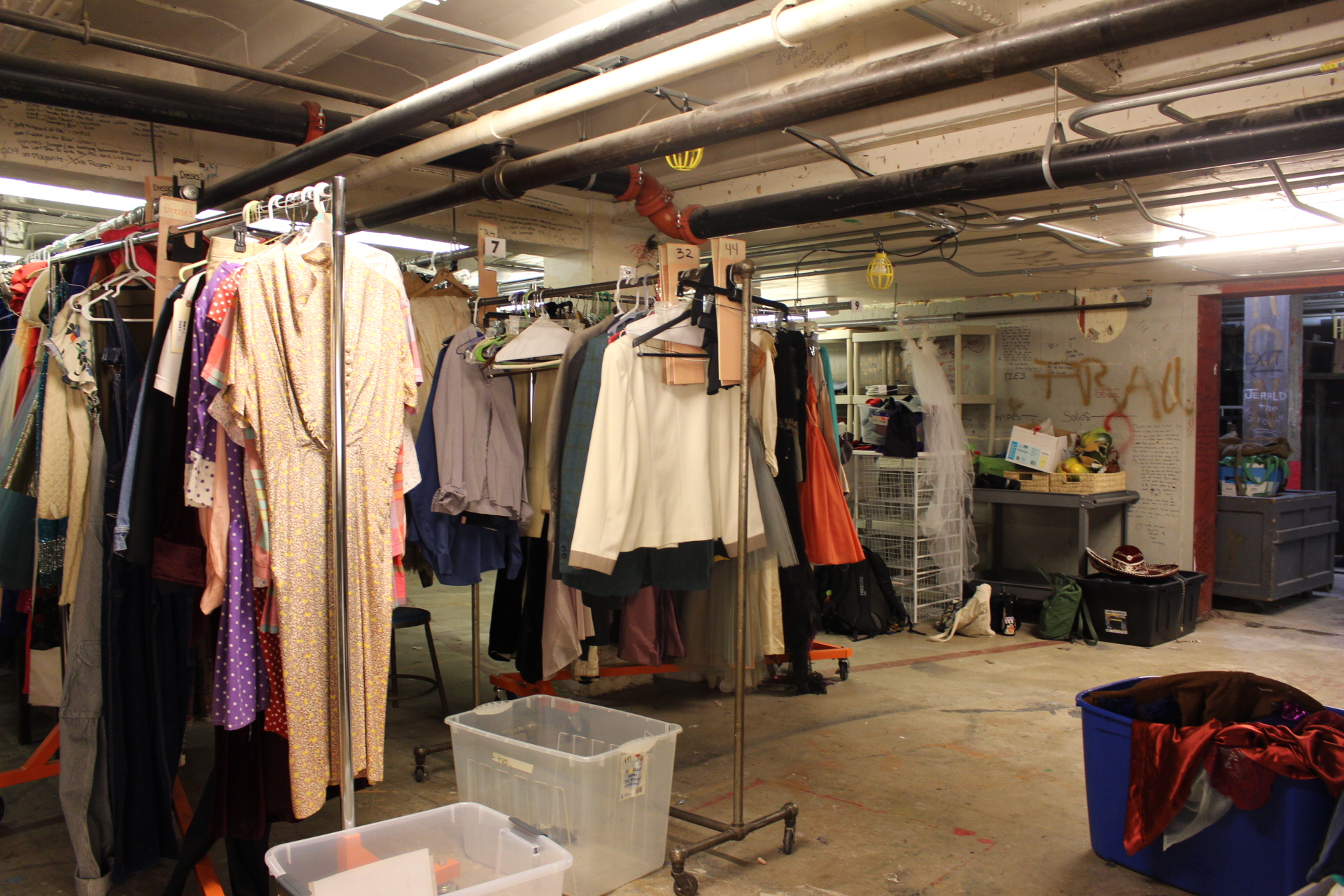
Since mid-December the cast has worked tirelessly to put together the music and dance for Bright Star. The cast rehearsed virtually everyday and they’ve had to adapt to many different challenges.
During the audition process, they were auditioning for both Bright Star and Shrek because of the new format for the play lineup. Both auditions took place in the same week.
“It was a little stressful,” said Senior Ray Theisen who plays Jimmy Ray Dobbs. “I think I handled it pretty well.”
The challenging part about auditioning for two shows at once is separating the two stylistically.
“The Shrek dance audition had tap dancing which is a completely different dance style than what we do in Bright Star,” said Senior Jack White who plays Daddy Cane.
Bright Star also brought a new set layout with it. The audience is seated in a round and will be right on stage with the actors as opposed to the usual seating in the house. The gap between the actors and audience is almost nothing.
“It’s going to be interesting. I’m not used to it but I think it will be good,” said Theisen. “It’s easier to act more intricately when there’s people right there because they can see more of your emotion than when they’re in the house.”
Hours and hours of practice lead up to the perfection of Bright Star. There’s three main types of practice: rehearsals, small group practice, and individual practice.
“The expectation is that the principal roles get their solo stuff done on their own time and if they need help with the vocal director, they get that,” said Theisen. “We do a lot of big group dance rehearsals, a lot of big group vocal rehearsals and we block every scene with our director.”
Though preparation comes from practice it can also come from others. The cast has developed a strong bond that allows everyone to thrive around each other.
“If you miss a day or don’t know the choreography, there’s always somebody else who does know it,” said Theisen. “A lot of people come in during lunch and help other people. You can always go to the vocal director who’s always available to help you with your music.”
The cast develops relationships amongst themselves that extend past the theater program.
“Ray Theisen has helped me a lot, not even just for the show, but he’s just an incredible hype man. If I don’t think I did good, Ray is always there to knock out any self-doubt I have about it,” said White.
The cast has the job of acting, singing, and dancing but finding the balance between song and dance can prove difficult.
“We’ll learn one and then the other, sometimes it’s a bit of a struggle for me,” said White. “If it’s [a struggle], I’ll go home after rehearsal and really just drill it into my head for as long as it takes to stick.”
Sometimes the cast has interesting and unconventional ways about nailing that balance.
“Before we run the show in dress rehearsal, we go into the choir room and run in circles while singing the song because you don’t want to be dancing and sound out of breath,” said Theisen. “It’s really important to get that muscle memory and to know your music so you don’t have to think about it.”
The Tosa East Theater Program is built on community. There’s a lot of opportunity to get to know people around the school which makes it a very uniting and engaging program.
“Whether it be the cast or crew, getting to know everyone is one of my favorite things about theater at East,” said White.
Doing a play gives the students involved a chance to learn and reflect on their experience. These lessons may be carried along with them for the rest of their theater career or it may just be a useful skill. Either way, Bright Star is a show that evokes emotion, dedication, and growth from the cast.

Behind every light, sound, or decoration, there is a crew. Before, during, and after the production, there are people working to get everything working just right, even when the actors are sweeping the audience off their feet with their stellar performances. Without any of the crews, there would be no production, and the show would not go on. They are responsible for making sure everything runs smoothly and works well behind the curtains, even if it takes long hours for weeks at a time.
Long before the show’s opening night, when the production is just beginning, crews are already bringing all their efforts into the theater. When it comes to the set, construction and paint crew work together to create a set that will amaze the audience, as well as others in the theater.
“Bright Star was a really big set and we did a lot of really different things … a lot of [the challenge] was just the timeframe because there was so much that had to happen,” said Junior Elsa Volland, the crew head for construction. “Without crew, you’re not gonna have lights, you’re not gonna have a set, and it really just makes you have an atmosphere, and it brings the setting of a show into place.”
The community formed within crews and with each other also does not go unnoticed. For the show to be successful, everybody involved in the crews must be cooperative and respectful of each other, and it is clear that they are already ahead of the curve.
“I really like being able to contextualize what we’re building and being able to learn all new skills, and also being able to work with other people and other crews to do it,” mentioned Volland.
Students are not alone in their work; specialists are present and available to provide assistance to crews, but every crew member puts in the effort that makes everything possible. Despite the stress of an ongoing show, “tech” crews such as deck or props still face the challenges and stay late hours working on cues.
“Deck is very important to the show because we move around a lot of the set pieces and we make sure that the actors have time to get to where they need to be … and making sure everything is in the right place for them to be moving around and blocking the scene,” said Senior Zen Granger, the crew head for deck. “A challenge with Bright Star is … the timing of it. I know that I was gone for the first two days of tech week and I know that about half of my crew was gone … but we managed to figure it out and we have been running stuff pretty smoothly.”
What’s also important to such an energetic work environment is a lighthearted mood to keep tensions at bay. With crew experiences come fond memories and more reasons to love working in technical production.
“We had this spray bottle, so we would chase each other [with] this stupid spray bottle, and I got to spray people with it,” said Volland. “It was really great.”
Granger also added, “Personally, I like to do deck because I like lifting heavy objects.”
Everything comes together in the end, and it is thanks to everybody involved in every crew, along with those involved in the pit, and of course, the cast. Bright Star was a memorable production and unique in its creative ambitions, which the audience will never forget even as the Tosa Players continue to impress year after year.

This year, Tosa East’s pit has had to undergo many logistical changes, due to Bright Star being performed in the round. Instead of occupying rooms offstage like usual, this year the pit is set up in the first few rows of the auditorium, where traditionally the audience would be seated. Instead, the seats were taken out, and audience members can see the pit as they walk down the aisles to their seats onstage. This change has posed some challenges, but also allowed for a unique pit experience.
Pit conductor Jennifer Lato was in charge of the group of student musicians. She, along with everybody involved, worked hard to perform the orchestral and traditional soundtrack for the show.
“I like when the students get to immerse themselves in the performance, a lot of the time if we are located somewhere other than the theater it causes us to not connect with the show,” said Lato. “Being able to see and hear the show adds tremendous depth to our experience.”
Senior Lily Nielsen voiced a similar sentiment. When asked how her pit experience differs being closer to the stage Nielsen replied, “I love it! I can hear so well, and it’s really more interactive. Also everyone comes and cheers for us at the end, which I personally love”.
Nielsen plays mandolin and guitar in the pit, and has enjoyed getting to play bluegrass music in a theater production. Her favorite song from the show is Please Don’t Take Him because “it’s really emotional, and our part in pit is so metal.”
Lato, on the other hand, has a different opinion, with her favorite songs being Heartbreaker because “it’s a beautiful piece that evokes a lot of emotion and is very well written so that the musicians really complement the singers on stage,” as well as So Familiar/At Long Last due to its feelings of “relief and validation for Alice after she has been through so much.”
This year, pit is able to uniquely interact with the audience during intermission and after the show, so stop by and congratulate all of our amazing East musicians for the hard work they put in!
The Tosa Compass is the only dedicated Wauwatosa newspaper, providing quality news coverage. Your donation will support the student journalists of Wauwatosa East and West, helping us purchase equipment and cover our annual website hosting costs.


